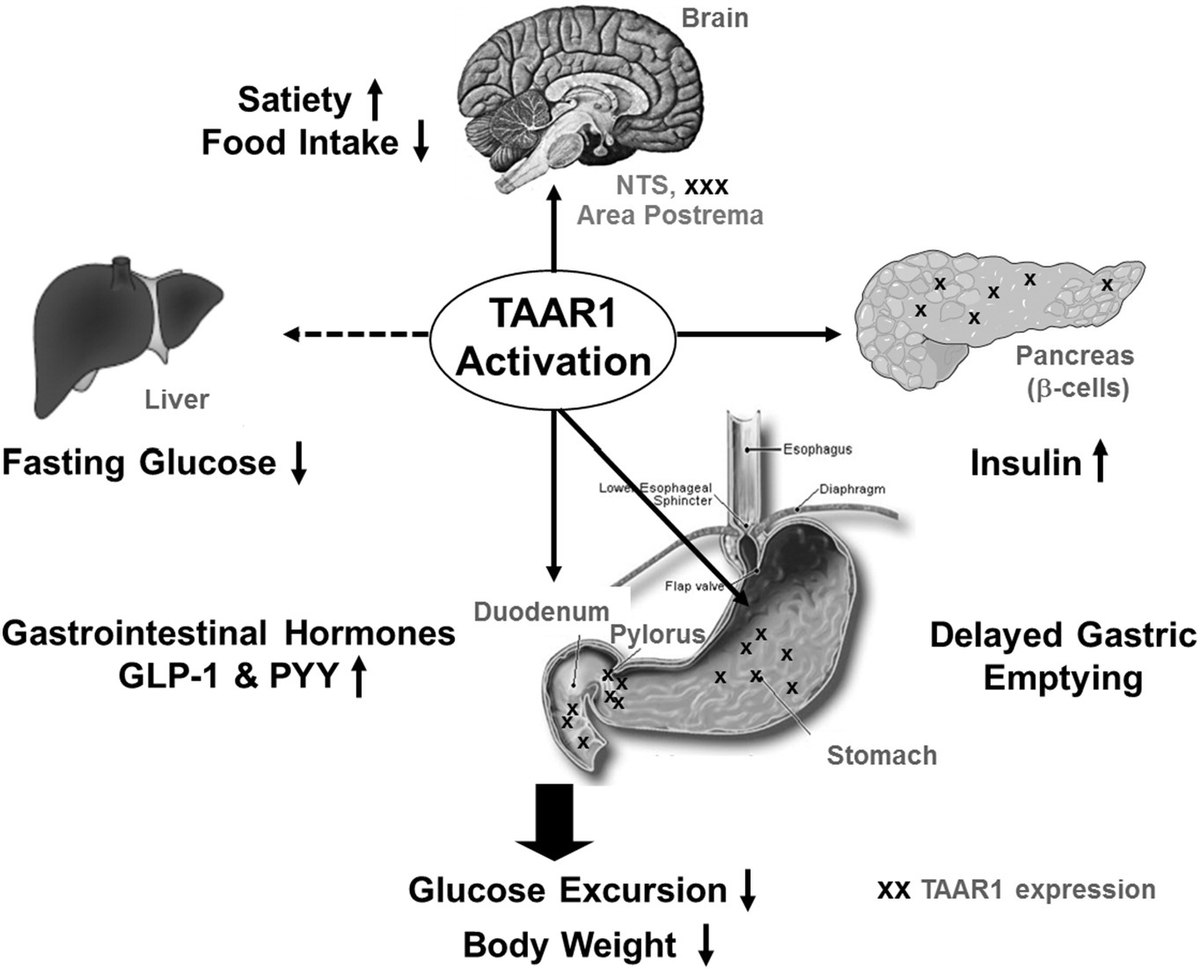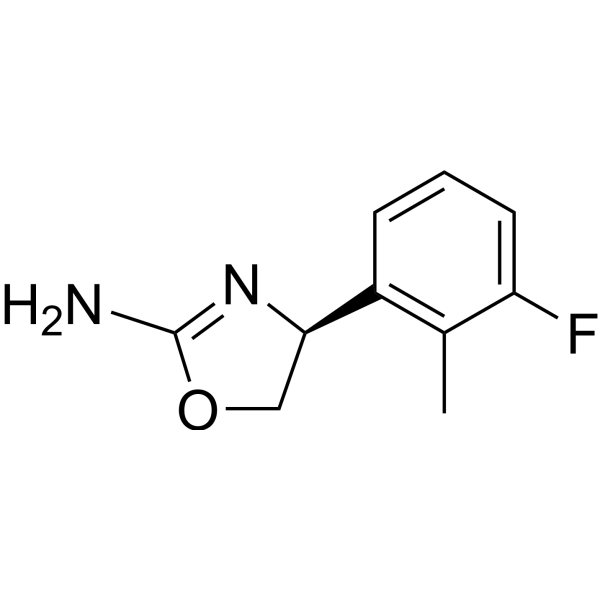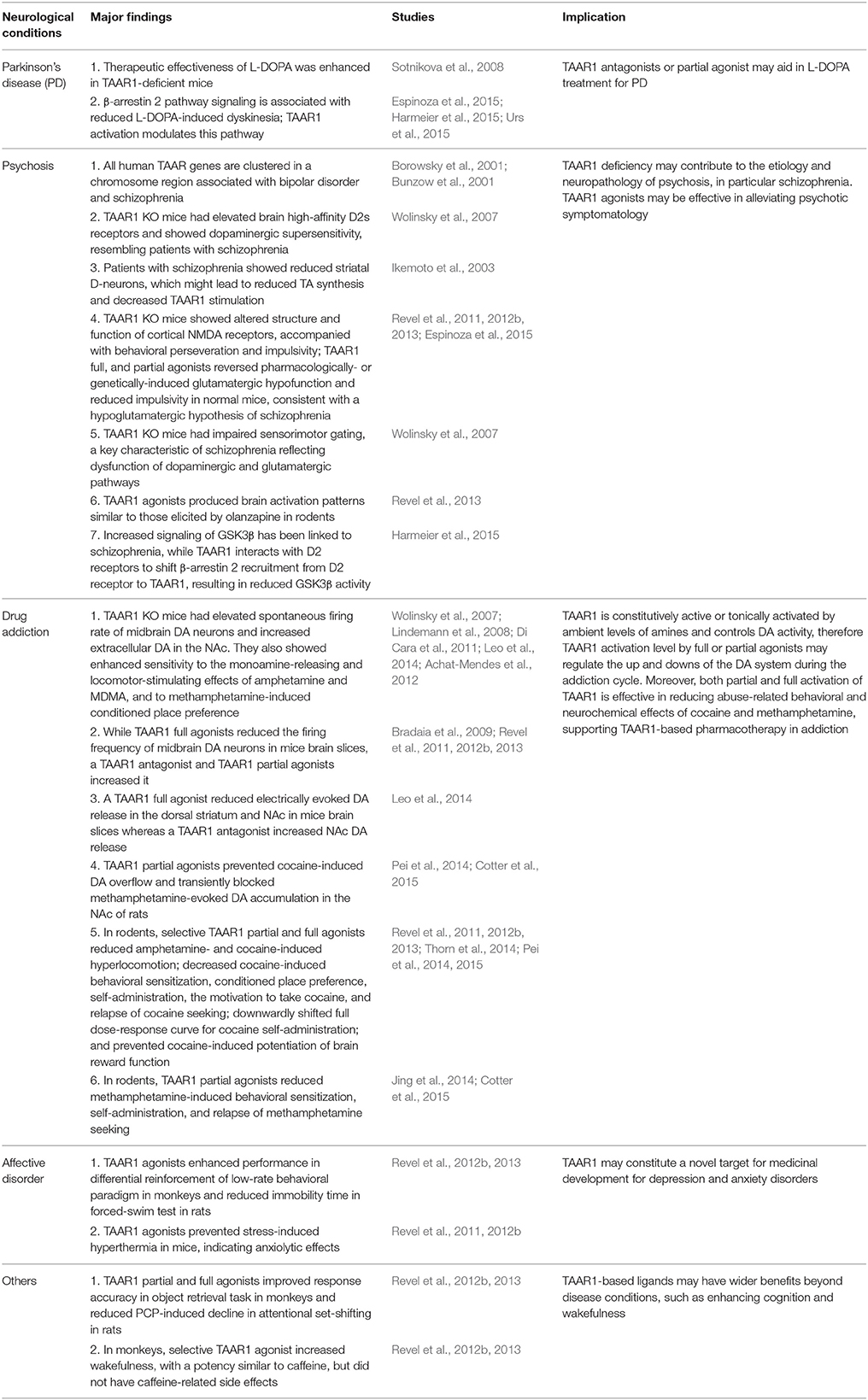Many well regarded stimulants are agonists of TAAR1.

 en.m.wikipedia.org
en.m.wikipedia.org
It is a presynaptic receptor with Gs functions that has neat opposite effects to inhibitory presynaptic autoreceptors (5HT1a, a2 adrenergic, and D2short receptors).
It is postulated that low levels of TAAR1 signaling can predisposed to depression, and high levels of signaling can pre dispose to schizoprenia.
This seems like agonizing it would pretty simply lead to monoamine release. However, many TAAR1 agonists are monoamine releasers by other means.
Do you think that a selective TAAR1 agonist would have recreational/stimulant effects (assuming this hypothetical compound has a good pharmacokinetic profile)?
I am unsure of the answer (or if there is a specific one).
@G_Chem @4meSM (i remember you mentioning this receptor in the past few days).

TAAR1 - Wikipedia
It is a presynaptic receptor with Gs functions that has neat opposite effects to inhibitory presynaptic autoreceptors (5HT1a, a2 adrenergic, and D2short receptors).
It is postulated that low levels of TAAR1 signaling can predisposed to depression, and high levels of signaling can pre dispose to schizoprenia.
This seems like agonizing it would pretty simply lead to monoamine release. However, many TAAR1 agonists are monoamine releasers by other means.
Do you think that a selective TAAR1 agonist would have recreational/stimulant effects (assuming this hypothetical compound has a good pharmacokinetic profile)?
I am unsure of the answer (or if there is a specific one).
@G_Chem @4meSM (i remember you mentioning this receptor in the past few days).







